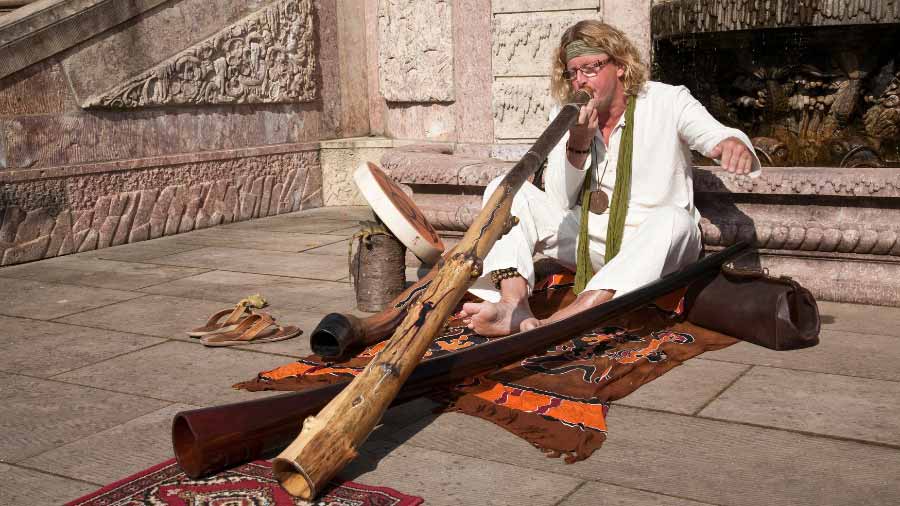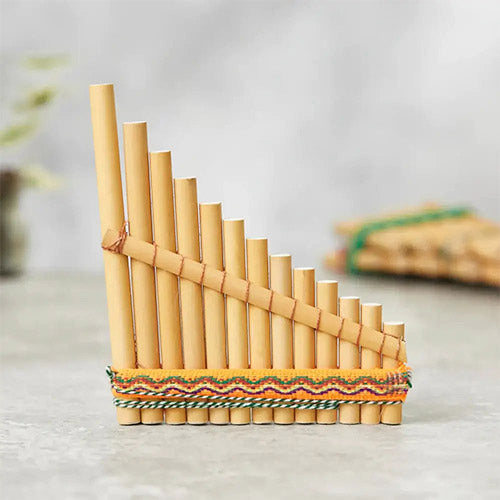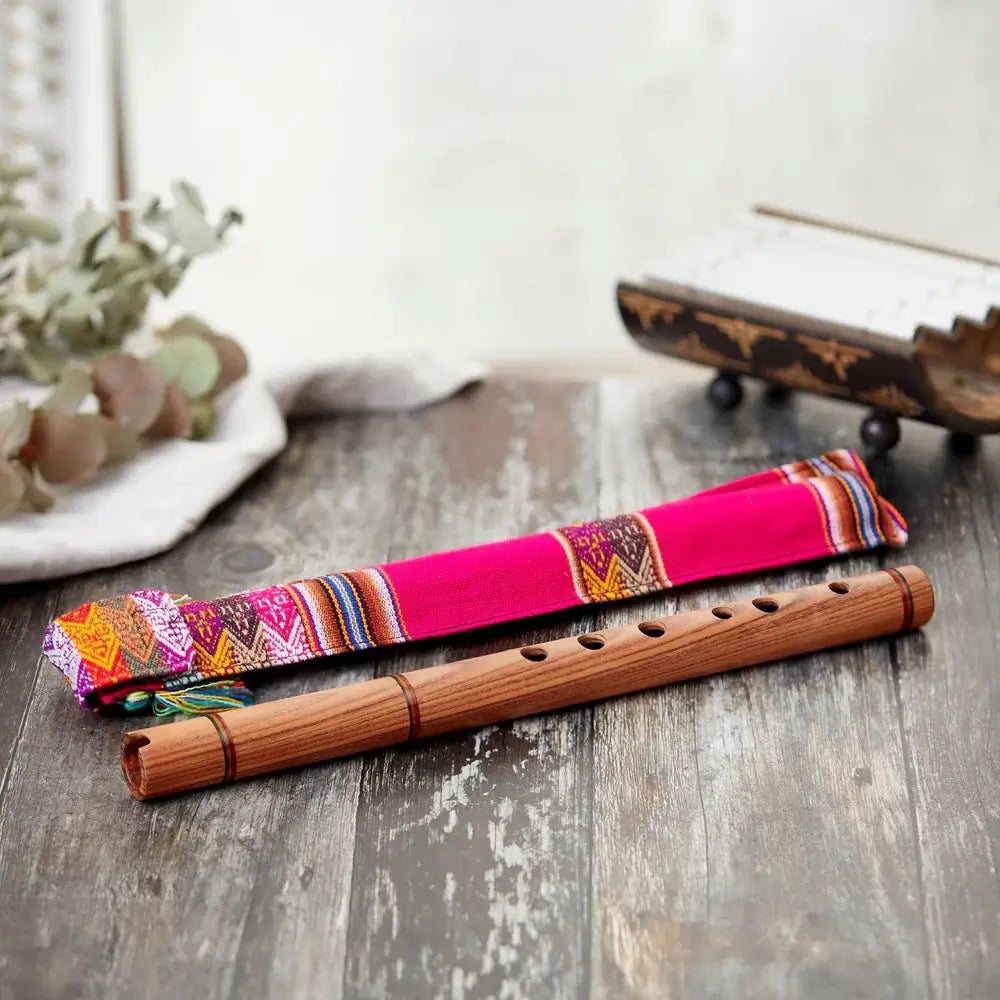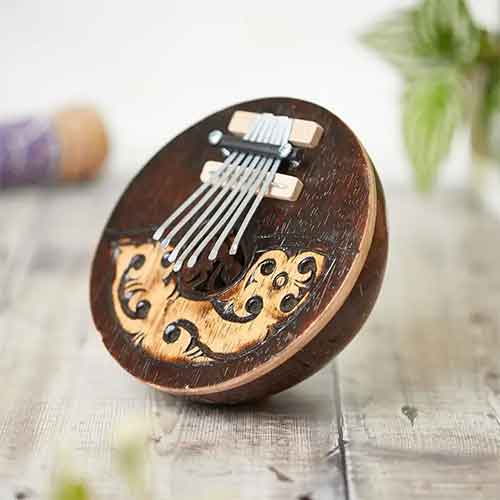Discover the world of didgeridoos in this complete guide, you will learn about the various types of didgeridoos and will find out how to select the perfect instrument for you whilst gaining insights into the materials that shape their unique sound. Whether you are a beginner or an experienced musician, this guide will help you develop a deeper understanding and appreciation for this incredible instrument.
The Origins of the Didgeridoo
The didgeridoo holds a prestigious place as one of the oldest wind instruments in the world. Its origin story begins with the Indigenous peoples of Australia, where it has been a part of their culture for at least 1,500 years, though some estimates suggest it could be over 40,000 years old. Crafted from naturally hollowed-out eucalyptus trees by termites, the traditional didgeridoo, or "yidaki" known in some Aboriginal languages, has played an essential role in ceremonial gatherings and as an accompaniment to songs and dances.
For the Aboriginal peoples of Northern Australia, the didgeridoo is more than just an instrument; it has a history. Men traditionally play it, and the complex rhythms and sounds are thought to connect the player with the ancestral world. The music of the didgeridoo is believed to represent the voice of the Earth itself, echoing the sounds of Australian culture. In the past 10 years, the didgeridoo has become even more famous around the world.
Different Types of Didgeridoos (Buying Guide)
When you're in the market for a didgeridoo, several factors must be considered. First and foremost, think about your skill level and the style of music you intend to play. Are you a beginner looking for an easy-to-play instrument, or are you an experienced player seeking a didgeridoo with specific acoustic properties? The choice of materials, and length will impact the instrument's playability and sound.
Sound and Build Quality
A high-quality didgeridoo is a work of art. Pay attention to the finish, any cracks or blemishes, and the smoothness of the interior bore, as these aspects can all affect the instrument's sound. Handcrafted didgeridoos often bear the marks of their maker's techniques, lending a unique character to each piece. Feel free to ask the seller about the crafting process and the origin of the materials.
Didgeridoo Material
The material from which a didgeridoo is made profoundly influences its sound, durability, and overall feel. Traditional instruments crafted from termite-hollowed eucalyptus have a warm, organic tone that many players seek. However, alternative materials like bamboo and hardwoods can offer distinct sound profiles and variations in weight and longevity.
Didgeridoo Types
The Meinl Snake Didgeridoo
An example of a modern adaptation is the Meinl Snake didgeridoo, which features a unique curved shape that resembles a coiled serpent. This design provides a visual aesthetic and makes the instrument more compact and portable. Despite its unconventional appearance, the Meinl Snake didgeridoo produces an authentic sound, making it a popular option for novice and beginner players.
The Melaya Bamboo Didgeridoo
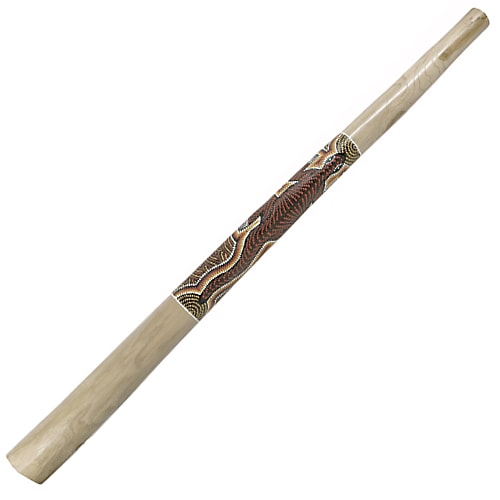
For those seeking a more traditional experience, the Melaya long full-size didgeridoo offers a classic straight form, often crafted from natural woods like eucalyptus or bamboo. This type of didgeridoo is known for its deep, resonant tones and is well-suited for ceremonial play or performance. The length of the instrument plays an essential role in its pitch and sound quality, with longer didgeridoos producing lower notes. Bamboo is famous for didgeridoos due to its natural resonance and lightweight properties. Bamboo didgeridoos are often more affordable and can be a good choice for beginners. You can purchase the Melaya Didgeridoo here.
The Compact Spiral Didgeridoo

A creative twist on traditional design is the compact spiral didgeridoo. Crafted to save space without compromising sound quality, these instruments loop back on themselves, creating a spiral shape that allows for a more extended air column in a shorter overall length. This design is particularly appealing for those who travel frequently or have limited storage space but still desire the whole experience of playing a didgeridoo.
Playing the didgeridoo is an adventure that connects you with an ancient tradition. Learning to play the didgeridoo promotes respiratory health and breath control, providing therapeutic benefits for practitioners. Its natural materials contribute to its aesthetic appeal, making it a visually striking addition to any collection or performance setup. You can check out our full collection of Didgeridoos here.
Didgeridoo (Frequently Asked Questions)
How do you pronounce "Didgeridoo"?
The pronunciation is often simplified to "didge-uh-roo" or "didjeridoo." However, in the Indigenous Australian languages where the term originates, it is pronounced closer to "did-jer-i-doo" or "dee-jer-i-doo."
How is a Didgeridoo played?
To play the Didgeridoo, the player blows air continuously through the instrument while using their lips and tongue to create rhythmic patterns and sounds. Circular breathing, a technique that allows the player to inhale through the nose while maintaining a constant airflow from the mouth, is commonly employed to produce uninterrupted sound.
Can anyone learn to play the Didgeridoo?
Yes, anyone can learn to play the Didgeridoo with practice and dedication. While mastering circular breathing and achieving the distinct drone sound may require time and effort, there are many resources available, including tutorials, workshops, and online lessons, to help beginners get started.
What are the health benefits of playing the Didgeridoo?
Playing the Didgeridoo offers several health benefits, including improved respiratory function, increased lung capacity, and strengthened muscles in the respiratory system. The circular breathing technique also promotes relaxation, reduces stress, and enhances mindfulness, making it beneficial for overall well-being.
How do you care for and maintain a Didgeridoo?
Proper care and maintenance are essential to ensure the longevity and sound quality of a Didgeridoo. This includes storing it in a dry, cool environment away from direct sunlight or moisture, periodically cleaning the mouthpiece to prevent bacterial growth, and oiling the wood to maintain its condition and prevent cracking. Additionally, avoiding exposure to extreme temperatures or sudden changes in humidity is important to preserve the integrity of the instrument.

